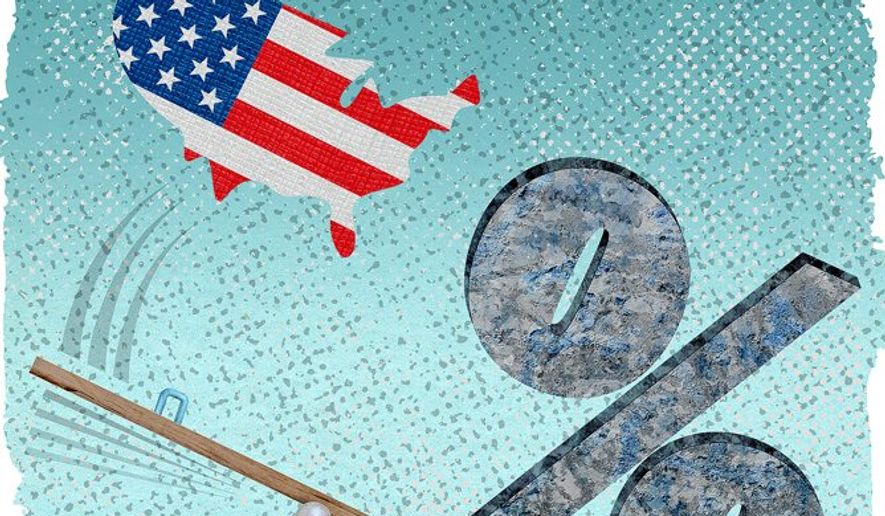OPINION:
President Joe Biden wants to raise taxes on capital gains but if he is serious about competing with China in high-tech industries, then he should change his thinking.
For the last century, capital gains have been taxed at lower rates than wages, rents, dividends, and interest. Currently, the top capital gains rate is 23.8% and for other investment income, 40.8%—those include the Obamacare 3.8% surtax on all investment income.
The tax system makes no allowance for inflation in computing the base—the difference between the purchase and sale price of an asset. Hence, the real tax on an asset purchased in 2010 and sold in 2020 was 42.5%—greater than the tax on wages.
China massively subsidizes high-tech activities, and industries such as semi-conductors and commercial aircraft have been subsidized by Western governments like Korea and the European Union. Meanwhile, U.S. government support for research and development as a share of gross domestic product has fallen, and Beijing has so many ways of boosting investments in preferred activities—low-interest loans, cheap land and the like—it’s difficult to count what’s going on over there.
The World Trade Organization has proved essentially useless for combating subsidies for high-tech innovation and exports, because the Chinese, with their mercurial ways, are difficult to prosecute through dispute settlement. And the best we can do with market economies is get a finding of harmful subsidies and then impose tariffs. With the market for chips, solar panels, airplanes and most everything else driven by global economies of scale, a tax on sales in the U.S. market alone is hardly a remedy.
Virtually all our big technology companies started out in a garage and under the wings of angels. Engineers and entrepreneurs have promising but speculative ideas, and deep-pocket venture capitalists invest in 10 enterprises hoping one or two will make it big. Then the object is to have a lucrative public share offering or sell to big established technology companies like Apple or IBM. The profits are taxed at a lower capital gains rate, and that’s how we subsidize R&D to make up for Beijing’s largess.
If we taxed capital gains at ordinary rates, we would have a lot less risk taking, investment in new ideas and essentially abandon the field of high tech and military preparedness to the CCP.
Using the preferential capital gains rate to compensate for inflation is crude—sometimes it’s too much and other times too little—and the carried interest loophole terribly abuses the system.
Regarding the latter, top corporate leaders and private-equity managers get a good deal of their compensation for managing other people’s assets in stock options. When these shares are sold, this labor income, which should be taxed as wages, is taxed at the preferential capital gains tax rate. That is hugely unfair to ordinary citizens who don’t earn their 7- and 8-digit incomes.
Mr. Biden wants to raise the capital gains tax to 43.4% and continue to ignore the effects of inflation. In California and New York, on investments made 10 years ago, that would raise the top rate to at least 70%. It’s going to be a lot tougher to find angels to capitalize the next Google or Advance Micro Devices with Mr. Biden’s punitive taxes on success.
In addition, he wants to tax both unrealized capital gains at death and continue to apply the 40% estate tax. Mr. Biden’s double death tax would essentially destroy many family businesses and discourage older Americans from investing to create a legacy for children, but it would boost the sales of yachts and tourist trips into space.
Sensible reforms would adjust the tax bases of realized capital gains for inflation, close the carried interest loophole and require that the capital gains rate only apply for investors with real assets at play—stock investors and those who put up their own cash to fund an enterprise. And apply ordinary tax rates to derivatives trades that do not insure the owner of a real asset against loss—for example, crop insurance.
We can set the capital gains tax too low—a rate of zero would encourage reckless risk taking—or too high—no risk taking at all. The statutory rate that maximizes tax revenues is 28%—as estimated by the Tax Policy Center and Joint Committee on Taxation. That would likely maximize productive investment too.
For an asset that doubled in nominal value over the last decade, the inflation-adjusted optimal tax rate would be 22.7%. That’s less than 23.8% under current tax rules.
• Peter Morici is an economist and emeritus business professor at the University of Maryland and a national columnist.




Please read our comment policy before commenting.